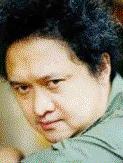Stories
UN Declaration and Programme of Action for a Culture of Peace
Personalities in the "culture of peace bed"
Some of the most important work we did for a culture of peace while at UNESCO was not in our formal work plans and, sometimes, could not even been included in our official history because it depended upon diplomatic confidentiality.
I learned this from my friendship with Mohamed Sahnoun whose great skills as a diplomat were linked to the respect that he had for those with whom he worked. When they agreed on confidentiality, he took this seriously, and so he obtained over the years the reputation from all sides of conflicts that he was a man who could be trusted. When I first met him, as the special representative of the UN Secretary General in Somalia, he had been painstakingly bringing back the teachers and the elders to reconstitute a government. All that was destroyed when the United States decided to invade Somalia. Mohamed had the courage to go to the commercial media and denounce the invasion, at which point the Americans had him fired. For the rest of the world, however, he was a hero for peace.
Diplomatic confidentiality figured in one of my proudest moments at UNESCO when we achieved a reconciliation in China. Here's how it happened.
Enzo Fazzino, who worked with me in the Unit for the International Year for the Culture of Peace, had established a process to award a prize to the best culture of peace film at the annual Cannes Film Festival, the most presigious film festival in the world. Funds were established to carry out the process, beginning with the convening of a high-level jury at another festival prior to Cannes (Berlin, if I recall).
The jury met and decided that the prize should go to the film "Seventeen Years" by the Chinese director Zhang Yuan. That was the good news.
But there was also the bad news - diplomatic news. The director was estranged from China and had made the film abroad.
So I made an appointment with my friend at the Chinese mission to UNESCO, and asked her to request the Ministry of Film in China to accept the award.
Time passed and we waited for a response. Finally, after several weeks, the word came. "No." I would not be accepted.
Being an international organization, under the direction of our Member States, we could not give such an award - and certainly not at the Cannes Film Festival.
So we went back and reconvened the jury when they came to Cannes, and ask them to look at the films at Cannes.
But once again, after seeing all the films, the jury said again that the best culture of peace film was "Seventeen Years."
So once again, I went over to see my friend at the Chinese mission, and explained the situation. "Please ask again to the Film Ministry," I requested.
And again we waited.
This time, the wait was worth it. Eventually, we received word that the Chinese ambassador would attend and accept the award. It seems that this was the last film made by one of the actresses, who was one of most revered in all of Chinese cinema, and during the intervening months she had died. Now, cinema-goers throughout China wanted to see her last film.
Hence, on October 18, 2000, the Special Cinema Prize for the Culture of Peace was awarded at UNESCO by French actress and UNESCO Goodwill Ambassador Catherine Deneuve to Chinese director Zhang Yuan for his film Seventeen Years. The award was accepted on behalf of China by their ambassador to UNESCO, and there followed a screening of the film in its original Chinese-language version with subtitles in French.

Zhang Yuan
Watching the film, I was very moved, as was the entire audience, by its theme of reconciliation, a theme which transcended the plot of the film itself (a family reconciliation following a murder and the imprisonment of the murderer). Afterwards, at the reception, there was a true reconciliation, as the director was welcomed back by Chinese authorities so that he could make films once again in China.
Later I tried to broker another such political compromise but with less success. A French NGO, whose representative was someone I had worked with, had brought charges at UNESCO against China for human rights abuses in Tibet. I arranged a luncheon with a representative from the Chinese mission and tried to negotiate an agreement. To the Chinese, I said, if you have nothing to hide, you should invite these people to visit Tibet, and to the French I said, you should go and see if your charges are true. At the end of the luncheon, the Chinese diplomat had agreed to allow visas for such a visit. As far as I know, however, the French never applied for a visit. In retrospect, I think it calls into question the honesty of the French criticisms.
 |
Stages
1982-1986
American Peace Movement
1986-1992
Seville and Peoples Peace Appeal
1992-1997
UNESCO Culture of Peace Programme